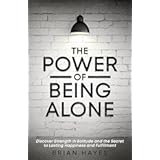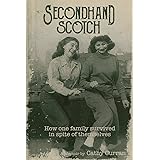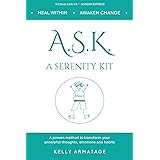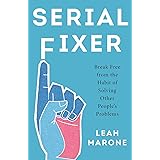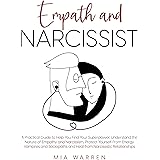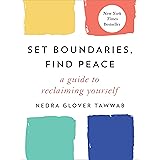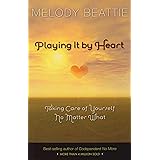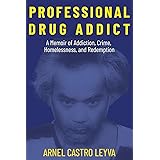Estimates suggest that between 2% and 16% of adults globally grapple with compulsive buying disorder, often referred to as shopping addiction. This challenging behavior can cast a long shadow over one’s financial health, personal relationships, and mental well-being, often leading to significant stress and feelings of guilt. As explored in the accompanying video, understanding the roots of this pervasive issue is the crucial first step toward reclaiming control and fostering healthier habits. However, simply recognizing the problem is not enough; implementing practical, sustainable strategies makes all the difference.
Overcoming the urge to shop compulsively demands both self-awareness and consistent effort. It involves a systematic approach, moving beyond surface-level spending to address the underlying psychological and emotional factors at play. While the video above outlines five essential steps, delving deeper into each one provides the actionable insights necessary for real, lasting change. This guide expands on those key points, offering additional perspectives and strategies to support your journey towards financial freedom and emotional peace.
Unmasking Your Shopping Triggers and Patterns
The initial and perhaps most vital step in conquering shopping addiction involves identifying the specific triggers that incite your urge to shop. These triggers are not always obvious; they can manifest in various forms, from deep-seated emotional states to subtle environmental cues. For instance, a common trigger might be the feeling of stress or boredom, as briefly mentioned in the video. Yet, other triggers could be more nuanced, such as encountering a particularly persuasive advertisement or scrolling through social media, seeing what others possess.
To truly unmask these triggers, maintaining a detailed shopping journal proves incredibly effective. Record not only what you bought but, more importantly, *when* and *why* you felt the need to make the purchase. Was it after a difficult day at work, a period of loneliness, or perhaps during a sale event? Researchers have noted that emotional triggers, such as anxiety, sadness, or anger, are significant drivers of compulsive buying for a large percentage of affected individuals. Understanding these patterns allows you to develop targeted coping mechanisms. For example, if you consistently find yourself shopping when feeling down, consciously replacing that behavior with exercise, a creative hobby, or connecting with a lovedored one can effectively disrupt the cycle.
Cultivating Financial Discipline with a Strategic Budget
After pinpointing your triggers, the next critical step focuses on establishing robust financial boundaries. Creating and strictly adhering to a budget is a powerful tool for managing your finances and curtailing unnecessary spending. The video advises listing income and essential expenses, a solid foundation, but an effective budget extends beyond simple categorization. It involves a conscious decision about how much you *can* and *should* allocate to non-essential items, consciously distinguishing between genuine needs and fleeting desires.
Consider employing budgeting methodologies such as the 50/30/20 rule, where 50% of income goes to needs, 30% to wants, and 20% to savings and debt repayment. Alternatively, a zero-based budget ensures every dollar has a purpose, leaving no room for impulse spending. Moreover, the video’s suggestion to use cash instead of credit cards for non-essentials is a wise one; studies indicate that consumers tend to spend more when using credit, due to the psychological disconnect from physical money. Leveraging budgeting apps or spreadsheets can also provide a clear, real-time overview of your spending, helping you stay accountable and empowered.
Enriching Your Life with Purposeful Alternative Activities
Addressing the void that shopping often attempts to fill is essential for long-term recovery. Simply cutting out a behavior without replacing it can lead to frustration and relapse. This is where finding alternative activities that genuinely bring you joy and fulfillment becomes paramount. The video highlights hobbies like painting, gardening, or cooking, and these are excellent starting points. However, the true benefit lies in discovering activities that engage your mind, body, or spirit in a way that provides intrinsic satisfaction, unrelated to material possessions.
The concept of “flow state,” where you become completely engrossed in an activity, can be incredibly therapeutic and shift focus away from consumerism. Engaging in creative pursuits, learning a new skill, participating in sports, or spending time in nature are all excellent examples. Research consistently links strong social connections and altruistic behaviors, like volunteering, to increased happiness and reduced reliance on external gratification. Replacing solitary shopping sprees with meaningful interactions or impactful community work can dramatically alter your perspective and build a more fulfilling life devoid of compulsive spending.
Harnessing the Power of Mindfulness for Conscious Choices
Mindfulness is more than just a buzzword; it is a profound practice that can fundamentally change your relationship with shopping. As the video suggests, it involves being present and observing your thoughts and feelings without immediate judgment. When a powerful urge to shop arises, instead of reacting immediately, mindfulness invites you to pause. This pause creates a crucial space between the trigger and your response, allowing for a conscious decision rather than an impulsive reaction.
During this mindful pause, ask yourself critical questions: “Is this a genuine need, or is it an emotional impulse?” “What feeling am I trying to satisfy with this purchase?” Techniques such as the “urge surfing” approach, where you observe the craving as a wave that will eventually pass, can be remarkably effective. Practicing simple breathing exercises or short meditations daily can strengthen your ability to remain grounded and aware when cravings strike. Over time, cultivating mindfulness equips you with the self-awareness and emotional regulation skills necessary to make deliberate, healthier choices about your purchases and, ultimately, your life.
Building a Robust Support System for Lasting Change
The journey to overcome shopping addiction is rarely a solitary one; seeking support is a sign of strength, not weakness. As the video rightly points out, leaning on friends and family who understand your struggle can provide invaluable encouragement and accountability. Beyond your immediate circle, however, there are structured support systems that offer unique benefits. Joining support groups, whether in person or online, connects you with others facing similar challenges, fostering a sense of community and reducing feelings of isolation.
The shared experiences and strategies within these groups can be incredibly empowering, reinforcing the idea that you are not alone. When underlying psychological factors contribute to compulsive buying, professional help from a therapist or counselor becomes indispensable. Cognitive Behavioral Therapy (CBT) or Dialectical Behavior Therapy (DBT), for instance, are therapeutic approaches often effective in addressing impulse control issues and developing healthier coping mechanisms. A strong support system, encompassing both personal connections and professional guidance, forms a vital safety net that makes the path to overcoming shopping addiction more manageable and sustainable.


